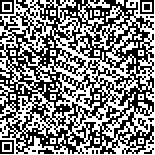|
| 引用本文: | 陆化杰,刘凯,陈子越,宁欣,王洪浩,何静茹,陈炫妤.南海西沙群岛海域鸢乌贼Sthenoteuthis oualaniensis胃组织微塑料沉积特性研究.海洋与湖沼,2022,53(1):187-194. |
| |
|
| |
|
|
| 本文已被:浏览 1761次 下载 1051次 |

码上扫一扫! |
|
|
| 南海西沙群岛海域鸢乌贼Sthenoteuthis oualaniensis胃组织微塑料沉积特性研究 |
|
陆化杰1,2,3,4, 刘凯1, 陈子越1, 宁欣1, 王洪浩1, 何静茹1, 陈炫妤1
|
|
1.上海海洋大学海洋科学学院 上海 201306;2.自然资源部海洋生态监测与修复技术重点实验室 上海 201306;3.国家远洋渔业工程技术研究中心 上海 201306;4.农业农村部大洋渔业资源环境科学观测实验站 上海 201306
|
|
| 摘要: |
| 随着微塑料在全球海洋环境和鱼类中被发现,海洋微塑料污染越来越受到各界学者的关注。然而头足类微塑料的研究甚少,南海鸢乌贼(Sthenoteuthis oualaniensis)对微塑料的摄取特性的研究更是未见报道。根据2020年3~5月中国生产调查船于南海西沙群岛海域采集的36尾鸢乌贼样本,对其胃组织微塑料沉积特性进行了研究。结果表明,36尾鸢乌贼样本中有33尾胃组织中发现微塑料,共计88个,单个样本微塑料含量介于0~6个,平均为2.44个。微塑料长度范围为0.121~2.748 mm,平均为0.878 mm,且75.0%的微塑料长度小于1 mm;颜色包括黑色(39.8%)、蓝色(31.8%)、透明(10.2%)、白色(6.8%)、红色(6.8%)和黄色(4.6%)6种,材质主要由棉(cotton)(50.0%)、聚对苯二甲酸乙二醇酯(PET)(21.6%)、人造丝(Rayon)(10.2%)、聚酯纤维(Polyester)(9.1%)、聚苯乙烯泡沫塑料(Styrofoam)(4.5%)、聚乙烯(PE)(2.3%)和丙烯酸塑料(acrylic)(2.3%)7种组成。相关性分析表明,南海鸢乌贼胃组织微塑料的含量与胃重、摄食强度无显著相关性,但与平均胴长、体重、年龄呈显著线性相关。研究结果认为,南海鸢乌贼胃组织微塑料的沉积随着个体的生长而逐渐积聚,这种积聚与自身生长可能呈对数函数关系(a>1)。 |
| 关键词: 鸢乌贼 南海 胃组织 微塑料 相关性 |
| DOI:10.11693/hyhz20210600145 |
| 分类号: |
| 基金项目:国家重点研发计划项目,2019YFD090402号;国家自然科学青年基金项目,NSFC4150618号。 |
| 附件 |
|
| CHARACTERISTICS OF MICROPLASTIC GASTRIC CONTENT IN STHENOTEUTHIS OUALANIENSIS FROM THE SOUTH CHINA SEA |
|
LU Hua-Jie1,2,3,4, LIU Kai1, CHEN Zi-Yue1, NING Xin1, WANG Hong-Hao1, HE Jing-Ru1, CHEN Xuan-Yu1
|
|
1.College of Marine Sciences of Shanghai Ocean University, Shanghai 201306, China;2.Key Laboratory of Marine Ecological Monitoring and Restoration Technologies, Shanghai 201306, China;3.National Distant-water Fisheries Engineering Research Center, Shanghai 201306, China;4.Scientific Observing and Experimental Station of Oceanic Fishery Resources, Ministry of Agriculture and Rural Affairs, Shanghai 201306, China
|
| Abstract: |
| With the discovery of microplastics in the global marine environment and marine animals, fishes, marine microplastics pollution has attracted more and more attention. However, little was known about the cases of microplastics in cephalopods, and the ingestion of microplastics by Sthenoteuthis oualaniensis in the South China Sea remains unknown. The microplastic contents in the stomach of 36 S. oualaniensis samples collected from the South China Sea in March to May in 2019 were analyzed. Eighty-eight microplastic pieces were observed from 33 stomach tissues. The abundance of the microplastics ranged from 0 to 6 items/individual, on average of 2.44 items/individual. The length ranged 0.121~2.748 mm, on average of 0.878 mm. Seventy-five percent of the microplastics were less than 1 mm in size. The colors were black, blue, transparent, white, red, and yellow, accounting for 39.8, 31.8, 10.2, 6.8, 6.8 and 4.6 percent, respectively. The materials of microplastics were mainly composed of cotton, PET, rayon, polyester, styrofoam, PE, and acrylic, accounting for 50.0, 21.6, 10.2, 9.1, 4.5, 2.3 and 2.3 percent, respectively. In addition, the microplastic content in stomach had no significant correlation with the stomach weight and feeding grade but significantly positive correlation with the mantle length (ML), body weight (BW), and age. This study indicated that the retention of microplastics in the stomach of S. oualaniensis accumulated with individual growth, and that if sample size were sufficient, the relationship between microplastic accumulation and the growth would present a logarithmic function. |
| Key words: Sthenoteuthis oualaniensis South China Sea stomach tissue microplastics correlation |
|
|
|
|
|
